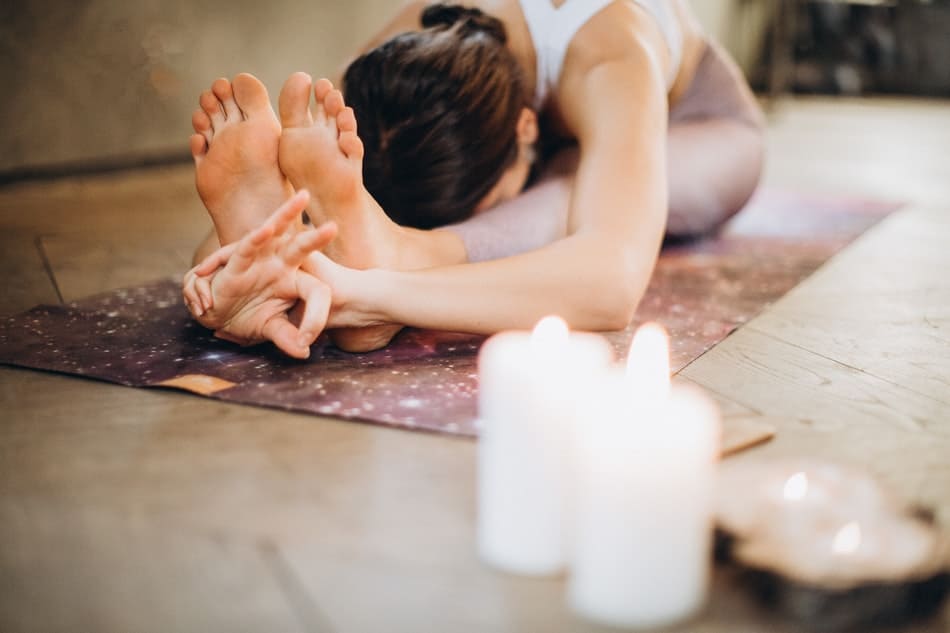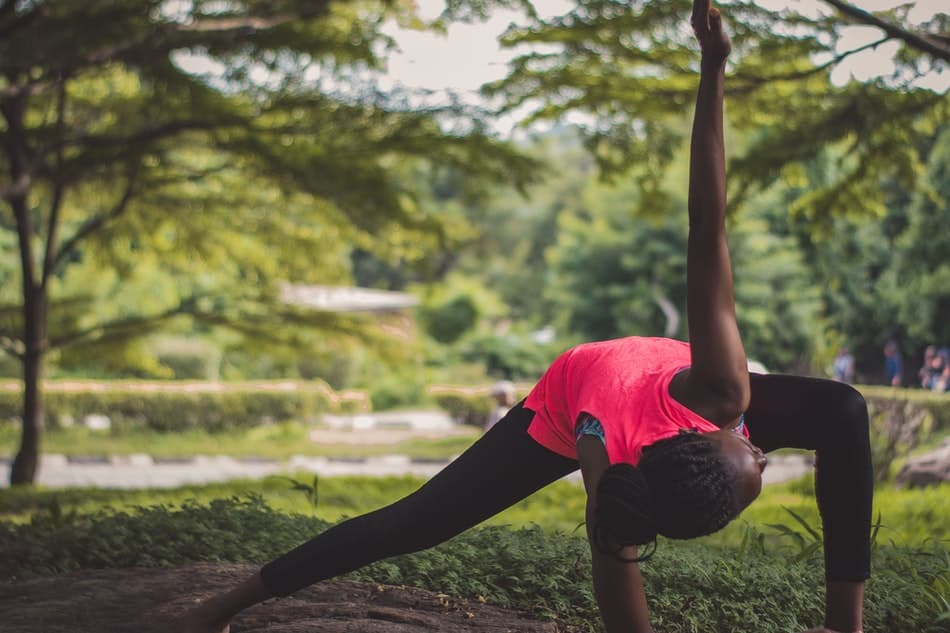There is a lot of debate surrounding vinyasa vs Bikram yoga. Which one is better? Is one more effective than the other? In this article, I will explore the differences between these two types of yoga and help you decide which one is right for you!
If you’re looking for a more challenging workout, then vinyasa yoga may be the better option. However, if you’re looking for something more relaxing and calming, then Bikram yoga may be a better choice.
What Is Vinyasa Yoga?
Vinyasa yoga is a dynamic and flowing form of yoga that links breath with movement. It is often referred to as ‘flow’ yoga because of the continuous flow of movement. Vinyasa means ‘linking’ in Sanskrit, and this type of yoga focuses on linking breath with movement.
There are many benefits to practicing vinyasa yoga, including improved circulation, increased flexibility, reduced stress levels, and improved overall fitness. Vinyasa yoga is also an excellent way to build strength and stamina. However, it is important to note that this type of yoga can be quite intense and is not suitable for everyone. If you are new to yoga or have any health concerns, it is best to speak to your doctor before starting a vinyasa yoga class.

What Is Bikram Yoga?
Bikram yoga is a system of 26 hatha postures and 2 pranayama breathing techniques. Then Bikram Choudhury synthesized this 90-minute practice from traditional Hatha Yoga techniques. It is practiced in a heated room to allow the muscles to warm up quickly and prevent injury. The room is typically kept between 95 and 105 degrees Fahrenheit with 40 percent humidity.
The 26 postures or asanas are performed twice in the order below during a Bikram Yoga class. The first series of postures are performed on the right side of the body and then repeated on the left side. All asanas are performed twice during a Bikram Yoga class.
There are many benefits to practicing Bikram yoga, including improved flexibility, increased muscle strength and tone, improved cardiovascular conditioning, improved respiratory function, and enhanced mental focus and concentration.
Vinyasa vs Bikram Yoga: Key Differences
So, what are the key differences between vinyasa and Bikram yoga? Here are four of the most noteworthy:
- Temperature is one of the most obvious distinctions between these two types of yoga. Vinyasa classes are typically held in a room that is around 70 degrees Fahrenheit, whereas Bikram studios are kept at a toasty 105 degrees.
- Another difference has to do with the pace of each class. Vinyasa flow classes move relatively quickly, with students flowing through sun salutations and other sequences at an invigorating pace. Bikram yoga, on the other hand, is a bit slower-paced, as students hold each pose for an extended period.
- The next distinction has to do with the breath. In vinyasa yoga, the breath is synchronized with the movement, and each inhales and exhale is given equal attention. In Bikram yoga, however, students are instructed to breathe through their noses for the entirety of class.
- Finally, one last difference to note is that in vinyasa yoga, students typically wear loose-fitting clothing, whereas, in Bikram yoga, form-fitting attire is encouraged (think leggings and a sports bra). This allows instructors to see your alignment more easily and make corrections as needed.

Vinyasa vs Bikram Yoga: Which One Should A Beginner Do?
Vinyasa yoga is a bit more fast-paced and intense than Bikram yoga. It involves a lot of movement, and you will likely break a sweat. If you are looking for a challenging workout, then vinyasa yoga is a good option. However, if you are new to yoga, you may want to try Bikram yoga first.
Bikram yoga is not as intense as vinyasa yoga, but it is still a great workout. It is also perfect for beginners because it is slow-paced and focused on proper form. In addition, Bikram classes are always the same so you know what to expect each time you go to class.
Doing too much too soon is one of the main reasons why people give up on yoga altogether. So start slow, and then build up your practice as you become more comfortable with it. Remember: there is no wrong way to do yoga, so just go with the flow and see what works best for you!
Vinyasa vs Bikram Yoga: Which Is Better?
The debate between vinyasa and Bikram yoga has been around for years. both types of yoga have their unique benefits, but which one is better?
That depends on your goals and preferences. If you’re looking for a challenging workout, vinyasa yoga may be a better option for you. If you’re looking for a more relaxing experience, Bikram yoga might be a better choice. It is up to you.
Try out both styles and see which one works better for you.
How Often Should You Practice Yoga?
So, how often should you practice yoga? The answer may depend on your goals. If you want to lose weight or improve your flexibility, you may need to practice more frequently. For general health and stress relief, practicing two to three times per week may be sufficient. However, the most important thing is to find a routine that works for you and stick with it. Don’t let yourself get discouraged if you can’t make it to the studio every day. Just do what you can and enjoy.
Final Words
The bottom line is that both vinyasa and Bikram yoga have their unique benefits. If you’re looking for a challenging workout, then vinyasa yoga is probably the better option. However, if you’re looking to improve your flexibility and detoxify your body, then Bikram yoga might be the better choice. Feel free to choose any type of yoga that best suits your preference.
So what are you waiting for? Try out both types of yoga and see which one works best for you! You might just be surprised at how much you enjoy (and benefit from) each one.
Related Articles

